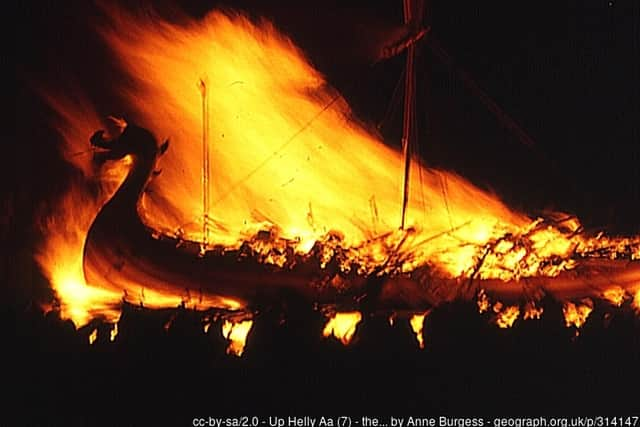Up Helly Aa in slow motion over acceptance of Viking women
For the first time, the Up Helly Aa has allowed females into the squads of townsfolk that follow the Guizer Jarl – the chief – with the campaign to allow both sexes to take part in the event first stirring around 40 years ago.
Up until now, a woman’s role at Up Helly Aa has been limited to acting as hostess at the after parties where squads take over community halls and go long into the night performing skits and making much merriment.
Advertisement
Hide AdAdvertisement
Hide AdHostess duties are carried out with pride, as are those of seamstress with the costumes for Up Helly Aa a major part of the show.


But there was something obviously galling about girls at school in Lerwick seeing helmets and shields being made for the boys then being told you could not get involved on the night. In 2023, how do you explain that to your daughter or niece, let alone the world?
Last night, it was expected 29 girls would take part in the Junior Up Helly Aa torchlight guizers procession. As far as the adult event goes, chat was lively in Lerwick that women were joining in on the night.
The decision to let in women to Lerwick’s Up Helly Aa is beyond welcome, but the reality is women won’t make it on to the head Jarl Squad for at least 15 years given the committee structure and the way members are nominated. Change will only happen if the committee decides to change the way they are elected.
Professor Alexandra Sanmark, of University of the Highlands and Islands, has recently talked about the need to realign the important role women played during the Viking era in Scotland and peel back the “testosterone-fuelled” raiding and pillaging story.
The tendency has been to treat Viking-era women as passive, maternal and tender, while men were dynamic, dominant and violent, when in fact women were subsistence farmers and enjoyed high status in their communities.
Comments
Want to join the conversation? Please or to comment on this article.